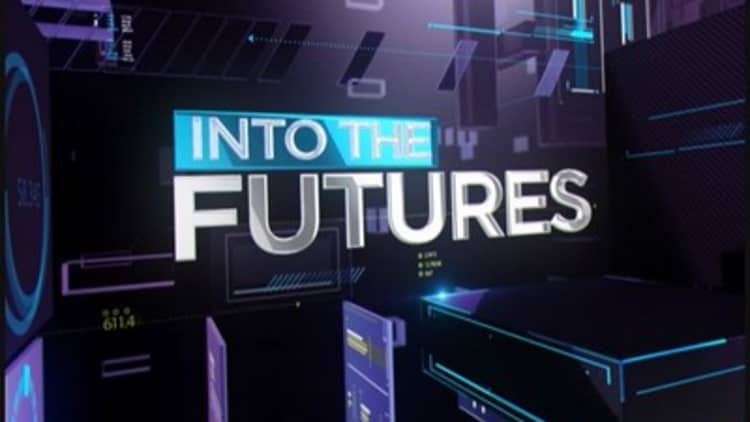
Bond buyers are getting a lot less money for their time. The question now is whether that trend will continue in 2015—and what it will ultimately mean for investors.
Over the course of 2014, the spread between longer-term Treasury yields and shorter-term yields has gotten smooshed. The widely watched 10-year/two-year spread has plunged from 2.7 percent to nearly 1.7 percent, as long-term yields have fallen and short-term yields have risen.
This phenomenon, known as yield curve flattening (because the chart showing the comparison between maturities and yields usually shows a curve with the longer-term bond yielding more, but that curve flattens when the spread diminishes) is common during Fed rate hikes, but is traditionally taken as a signal of coming recession.
That's because if investors are not demanding a higher return for longer-term bonds, it shows that they don't think inflation or growth are set to pick up dramatically.
For Peter Boockvar, chief market analyst at The Lindsey Group, the flattening of the yield curve is problematic indeed.
"There's continued divergence between the optimism of the stock market, and what the yield curve is telling you about a continued slowing in the global economy, which is a threat to corporate profits," Boockvar said. "U.S. equity guys are much more bullish on U.S. growth and think we're decoupling; the bond market is not as optimistic."
Still, more benign explanations also suggest themselves.
The Federal Reserve has said it's looking to raise its federal funds rate target, with many expecting the first hike to come in June 2015. Since short-term yields tend to follow the lead of the benchmark fed funds rate, that should raise short-term Treasury rates.
Meanwhile, inflation readings have been benign, with the consumer price index showing inflation of 1.7 percent over the past year, which is below the Fed's stated 2 percent target. Inflation expectations are critical to longer-term yields, since investors need to be adequately compensated for the risk that the value of money will drop over the decades that they hold those bonds.
The man some regard as the new bond king believes that the flattening will accelerate on the back of a coming rate hike. In a recent interview aired on CNBC, Jeff Gundlach of DoubleLine Capital predicted that the big surprise of 2015 will be just how much the yield curve flattens out.
"I think the Fed's going to raise rates. The message of 2014 has been, as the potential for Fed rate hikes has increased, the long end has done nothing but rally. I think the yield curve is going to flatten at a level previously thought unthinkable," Gundlach said.
Read MoreGundlach: 'Vicious cycle' possible in oil, $70 is line in sand
For something unthinkable, though, further flattening has certainly been thought about quite a lot on the bond trading desks of America.
Jason Rogan, managing director of U.S. government bond trading at Guggenheim Securities, noted that bets on further flattening have been the de facto way for market participants to try to profit off of expected Fed rate hikes. After all, those who simply sold 10-year and 30-year bonds have gotten crushed, as yields have defied market expectations and fallen precipitously. (Bond prices move inversely to yields.)
"A lot of accounts who have been beaten up by selling outright still want to a have a position in anticipation of rising rates, so they're putting on flatteners," he said. "It's the way you play a potentially rising rate environment with little to no inflation."
"It's a crowded trade, I'm sure, but sometimes crowded trades can work," Rogan added. "So far, it's been one of the best trades this year."
"The only thing that worries me is just how obvious it is," echoed Jim Iuorio of TJM Institutional Services, who does happen to agree with Gundlach. "Sometimes when we see things that are this obvious, it doesn't work out perfectly."
Still, the mood is not universal. For those who think the Fed will keep rates low through most of the year, like David Robin of Newedge, the curve is too flat already.
In the Fed's risk-reward analysis, "the risk of doing nothing is much lower than the risk of doing something," he wrote in a recent note. For that reason, he believes that the Fed won't raise rates until September 2015. If the hike comes later then the market expects, short-term rates are too high and consequently, the curve is already too flat.

Watch "Futures Now" Tuesdays and Thursdays at 1 p.m. ET exclusively on FuturesNow.CNBC.com!



